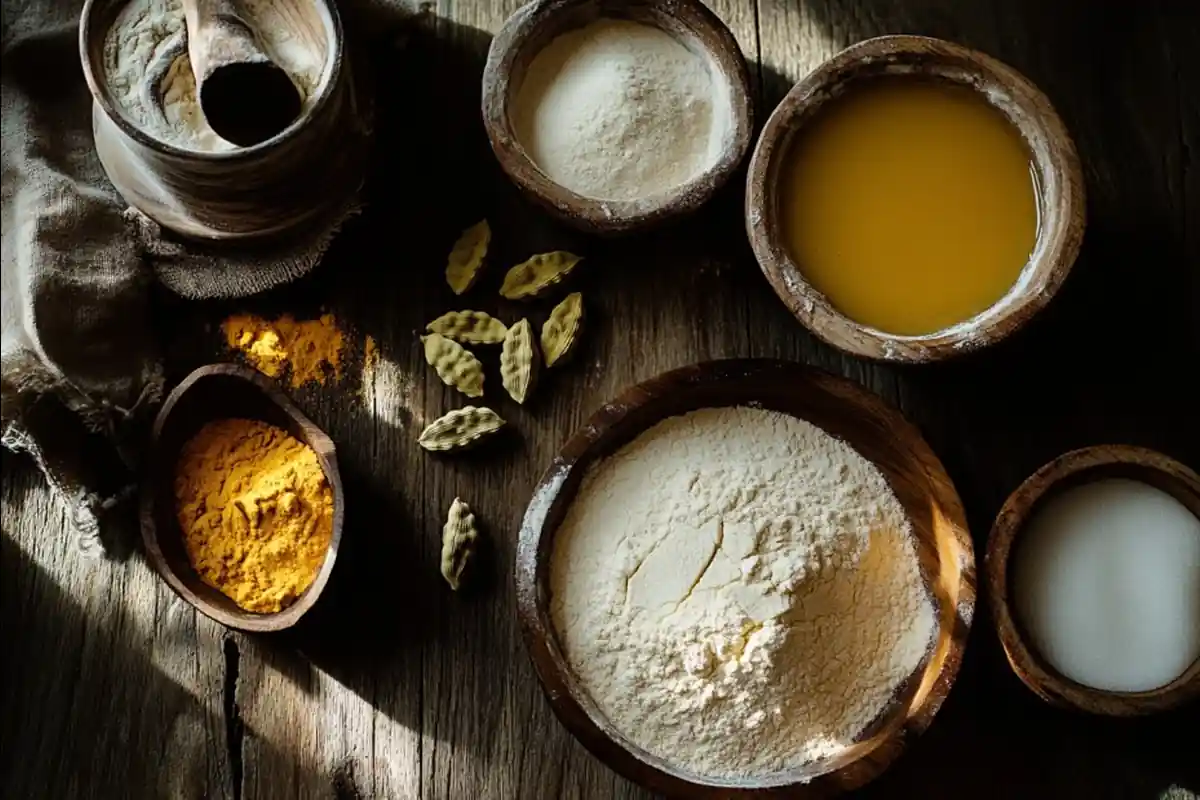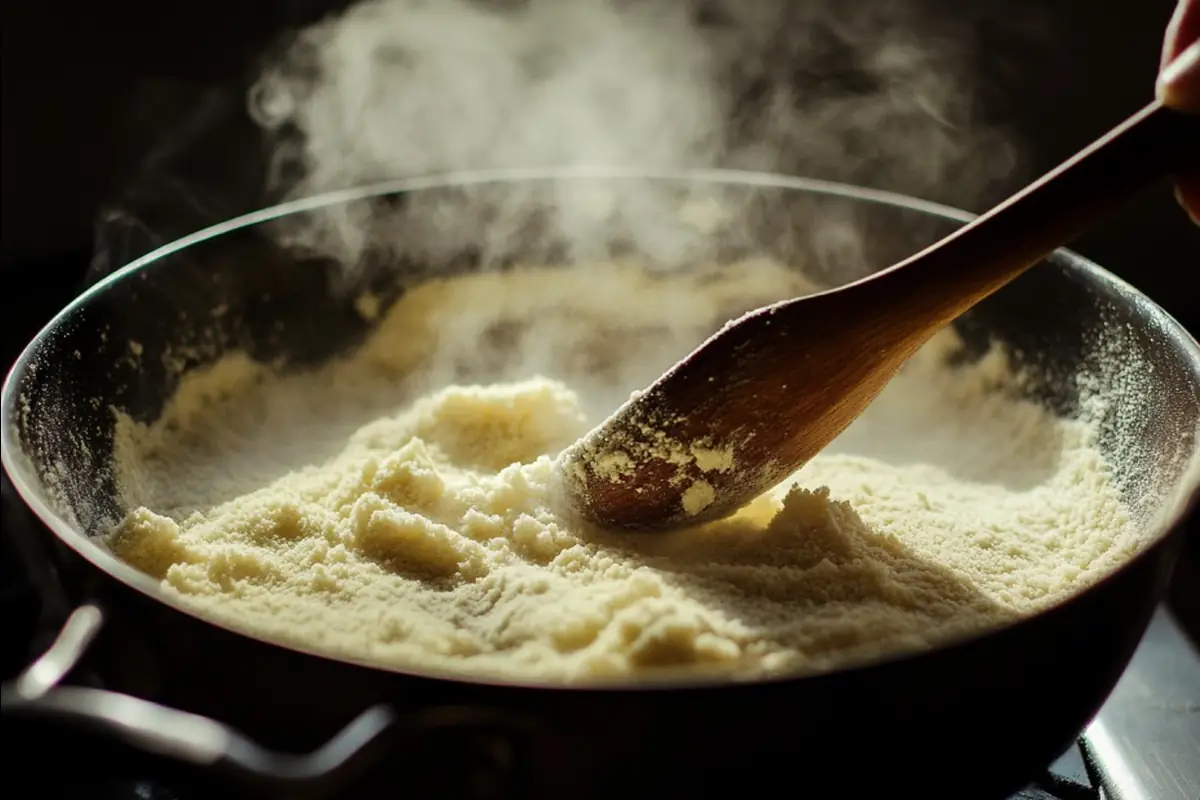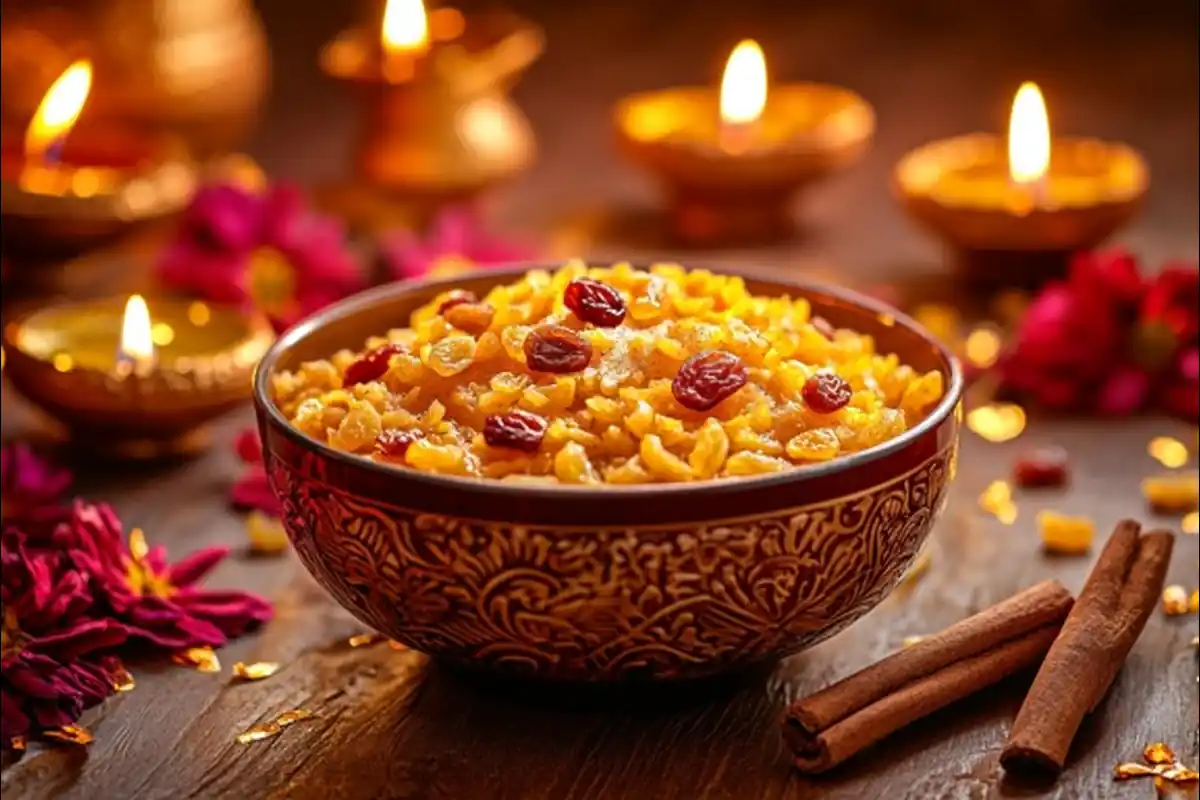Introduction
Parsad, a beloved sweet delicacy, is a staple in cultural and religious traditions. From its roots in ceremonies to its irresistible flavors, this dish is steeped in history and meaning. But have you ever wondered, “What is Parsad made of?” In this article, we’ll delve into the heart of this divine dessert, exploring its key ingredients, variations, preparation methods, and more. Along the way, we’ll answer common questions and share insights to help you better appreciate Parsad’s significance and versatility.
So, let’s dive in and uncover the secrets behind this cherished treat!
1: Introduction to Parsad
What is Parsad? An Overview
What is Parsad made of, and why is it so significant in religious and spiritual gatherings? Parsad is a sweet offering, often made during religious and spiritual gatherings, particularly in Hindu traditions. It holds a deep cultural significance, symbolizing purity, devotion, and blessings. This dish, usually served warm, is known for its rich texture and sweet, nutty flavor that’s simply irresistible.
Unlike typical desserts, Parsad’s unique blend of simplicity and richness makes it stand out. While its preparation varies slightly across regions, the core ingredients remain consistent, lending Parsad its signature taste.
The Cultural and Religious Significance of Parsad
In many Hindu rituals, Parsad is not just food—it’s a sacred offering. Often distributed during pujas and festivals, it symbolizes gratitude to the divine. Sharing Parsad fosters a sense of community and spiritual connection among participants.
Interestingly, the ingredients used in Parsad, such as ghee, sugar, and flour, are believed to represent abundance and prosperity. The act of preparing and distributing Parsad embodies the spirit of selfless giving.
Why Understanding Parsad’s Ingredients Matters
Understanding what is Parsad made of not only enhances our appreciation of its taste but also helps us connect with its cultural and spiritual significance. Beyond its delicious taste, the ingredients tell a story of tradition, nutrition, and adaptability. Whether you’re preparing it for the first time or seeking to perfect your recipe, understanding its components is the first step to creating a dish filled with both flavor and meaning.
In the next section, we’ll dive into the key ingredients of Parsad, revealing what makes this dessert a true crowd-pleaser.
2: Key Ingredients of Parsad
The Main Ingredients in Parsad

What is Parsad made of at its core? Parsad’s delightful taste comes from its blend of simple yet flavorful ingredients. The foundation of Parsad is flour or semolina, which forms the dish’s hearty base. These grains, lightly roasted, create a nutty flavor that defines Parsad’s identity.
Another essential ingredient is ghee, a clarified butter renowned for its rich aroma and velvety texture. Ghee adds a luxurious smoothness and enhances the overall flavor, making Parsad irresistibly indulgent.
To sweeten the dish, sugar is commonly used. Whether granulated or as syrup, sugar provides just the right sweetness to balance the richness of ghee and flour.
Optional Additions for Enhanced Flavor
To make Parsad even more special, cooks often add extras like nuts and raisins, which provide texture and a burst of sweetness. Almonds and cashews, when toasted, add a satisfying crunch, while raisins introduce subtle tartness.
A sprinkle of cardamom brings a fragrant, slightly spicy note that elevates Parsad’s flavor profile. This aromatic spice is a favorite in Indian desserts and pairs perfectly with the dish’s other ingredients.
Variations Across Regions and Cultures
Though Parsad’s base remains consistent, it takes on regional twists depending on the occasion and culture. For instance, in some regions, jaggery is used instead of sugar, lending a caramel-like depth. Others might incorporate coconut or saffron for unique flavors and vibrant color.
These variations not only add diversity to the dish but also show how Parsad adapts to different cultural contexts while staying true to its roots.
3: How to Make Parsad: Step-by-Step Process

Preparing the Base Mixture
What is Parsad made of, and how do you prepare it? The process begins by heating ghee in a pan over medium heat. Once the ghee is melted and aromatic, flour or semolina is added, giving the dish its characteristic nutty flavor. Stir continuously to ensure the mixture roasts evenly and doesn’t burn. This step is crucial for achieving the dish’s signature nutty aroma and golden-brown color.
The roasted mixture should release a toasted scent, signaling that it’s ready for the next step.
Incorporating the Sweet Elements
Separately, prepare a sugar syrup by dissolving sugar in water and heating it until slightly thickened. Gradually pour the syrup into the roasted mixture, stirring vigorously to prevent lumps. The mixture will bubble and thicken quickly, transforming into Parsad’s characteristic texture.
Ensure the consistency is smooth, yet dense enough to hold its shape when served.
Finishing Touches: Garnishes and Presentation
To finish, fold in your choice of garnishes—nuts, raisins, or a sprinkle of cardamom powder. These additions not only enhance the flavor but also make Parsad visually appealing.
Serve the Parsad warm in small bowls or on a decorative plate. Its inviting aroma and rich texture will leave everyone eager for a taste.
In the next sections, we’ll explore Parsad’s history, health considerations, and answer some of the most common questions about this delectable dish!
4: The History and Evolution of Parsad
The Origins of Parsad in Religious Rituals
What is Parsad made of, and how has it evolved over time? Parsad’s history is deeply rooted in religious and cultural ceremonies, particularly within Hinduism. It is considered a sacred offering, often prepared as prasad to honor deities during prayers and festivals. Traditionally, Parsad symbolizes gratitude and blessings, with its distribution fostering unity among worshippers.
The simplicity of Parsad’s ingredients reflects its spiritual significance. Each component—ghee, sugar, and flour—represents abundance, purity, and devotion. These attributes make Parsad a cherished addition to rituals, connecting its rich flavor to deeper cultural meaning.
How Parsad Recipes Have Changed Over Time
While the essence of Parsad remains intact, its preparation has adapted over the centuries. Regional influences have led to variations, such as the inclusion of jaggery instead of sugar or the addition of regional spices like saffron. These changes reflect how Parsad has embraced local flavors while maintaining its traditional roots.
In modern kitchens, recipes have been simplified for convenience. Instant mixes and microwave methods have gained popularity, making it easier to prepare Parsad without losing its charm.
Modern Adaptations of Traditional Parsad
In contemporary times, Parsad has found its way into diverse cuisines. Beyond religious ceremonies, it’s enjoyed as a dessert at gatherings and celebrations. Health-conscious cooks experiment with alternatives like whole wheat flour, coconut sugar, or plant-based ghee, creating lighter yet flavorful versions.
For more delicious recipes and variations, consider exploring other traditional dishes from our recipe collection.
5: Health Benefits and Considerations
Nutritional Value of Parsad
Despite being a dessert, Parsad provides surprising nutritional benefits. The ghee contributes healthy fats that boost energy and promote better absorption of vitamins. Flour or semolina adds carbohydrates for sustained energy, while nuts provide essential nutrients like protein and omega-3 fatty acids.
However, moderation is key. Parsad’s richness, while delicious, can be calorie-dense, so enjoying it in reasonable portions ensures a balance between indulgence and health.
Healthier Alternatives and Modifications
For those seeking lighter options, there are several ways to tweak the traditional recipe:
- Reduce Sugar Content: Swap out regular sugar with natural sweeteners like stevia, honey, or coconut sugar for a healthier twist.
- Use Healthier Fats: Replace ghee with plant-based alternatives or avocado oil to reduce saturated fat intake.
- Incorporate Whole Grains: Opt for whole wheat flour or quinoa flour instead of refined options for added fiber and nutrients.
These modifications let you enjoy the essence of Parsad without compromising on health goals.
Balancing Tradition and Nutrition
While modern adaptations are appealing, traditional Parsad holds a special place in culinary and cultural traditions. Balancing health-conscious ingredients with authentic methods preserves both the flavor and the emotional significance of this dish.
When preparing Parsad, embrace a mindful approach—choose quality ingredients, adjust proportions, and savor the experience of creating this timeless dessert. By blending tradition with thoughtful nutrition, Parsad can remain a beloved treat for all occasions.
In the next sections, we’ll address common questions about Parsad and provide a satisfying conclusion to this guide!
Nutritional Information: Parsad
Parsad is a rich dessert, and its nutritional profile reflects the indulgence of its ingredients. Made with ghee, sugar, and flour, it is high in calories and fats, making it a satisfying treat for special occasions.
Nutritional Content (Per 100g)
Below is the approximate nutritional content of Parsad based on its traditional preparation:
| Nutrient | Amount (per 100g) |
|---|---|
| Calories | 405 kcal |
| Carbohydrates | 51 g |
| Protein | 6 g |
| Fat | 20 g |
| Saturated Fat | 12 g |
| Cholesterol | 54 mg |
| Sodium | 37 mg |
| Potassium | 216 mg |
| Fiber | 2 g |
| Sugar | 23 g |
| Vitamin A | 150 IU |
| Calcium | 125 mg |
| Iron | 2 mg |
6: Comparison of Parsad With Alternatives
How Does Parsad Compare with Traditional Methods?
Parsad, with its simplicity and meaningful preparation, often stands apart from more elaborate desserts. Unlike other traditional sweets that require complex techniques or lengthy preparation, Parsad can be made with minimal ingredients in a straightforward process. Its roots in rituals also set it apart, as it carries spiritual significance that many alternatives lack.
While other desserts might prioritize ornate presentation or exotic flavors, Parsad emphasizes purity and community. The use of basic, symbolic ingredients like flour, sugar, and ghee highlights its traditional essence, making it timeless.
Advantages of Parsad Over Other Solutions
When comparing Parsad to alternatives like halwa, ladoo, or barfi, its accessibility stands out. Its core ingredients are pantry staples, making it an affordable option. Additionally, its versatility means it can easily be adapted to suit dietary needs, such as gluten-free or vegan preferences.
Parsad also excels in emotional resonance. Few dishes evoke the same sense of belonging and spiritual connection. Sharing Parsad during a ritual creates an experience that goes beyond taste, fostering a deep cultural bond.
7: Common Questions About Parsad
What is Prashad made of?
What is Parsad made of? Prashad, or Parsad in Guyana and halwa in India, is a sacred dish for Hindu rituals. It’s made with flour, ghee, sugar, and milk, flavored with cardamom and cinnamon, and sometimes includes raisins or nuts for texture.
What is Guyanese Parsad?
Guyanese Parsad is a Caribbean twist on Indian Prashad, made with flour, ghee, milk, and sugar, often enhanced with maraschino cherries, raisins, or vanilla. It’s a staple for Hindu ceremonies like Poojas and Diwali, reflecting a blend of Indian and Caribbean traditions.
What is Parsaud?
Parsaud may refer to a variation or misspelling of Parsad, a traditional Indian sweet dish. It generally describes the same food, made with flour, ghee, sugar, and milk, served as a sacred offering in Hindu religious practices or enjoyed during festive celebrations.
What is Parsad for Diwali?
For Diwali, Parsad is a sacred offering symbolizing gratitude, devotion, and blessings. Made with ghee, toasted flour, spiced milk, and sugar, it is shared with loved ones after rituals as a gesture of goodwill.
8: Conclusion: Embracing the Essence of Parsad
Parsad is more than a sweet dish—it’s a symbol of love, devotion, and tradition. By understanding what is Parsad made of, we can truly appreciate its significance, versatility, Whether enjoyed during religious ceremonies or as a comforting treat, Parsad continues to unite people with its simplicity and richness.
As you prepare Parsad, embrace its timeless spirit by blending tradition with modern creativity. Share it with loved ones, savor its flavors, and cherish the connection it brings to both culture and community. Let Parsad inspire moments of sweetness and togetherness in your life.
9: Final Thoughts and Encouragement
Parsad is much more than a dessert; it’s a bridge between tradition and community. Understanding its ingredients and preparation process enriches your appreciation for its role in both cultural and culinary landscapes.
As you explore making Parsad, remember its simplicity is its beauty. Whether you stick to the classic recipe or embrace modern twists, the heart of Parsad lies in its ability to bring people together. Celebrate its flavors, share its warmth, and let it inspire a deeper connection to your heritage and loved ones. Parsad isn’t just food—it’s a timeless celebration of life and togetherness.


5 thoughts on “What is Parsad Made Of? A Complete Guide to Its Ingredients and Preparation”